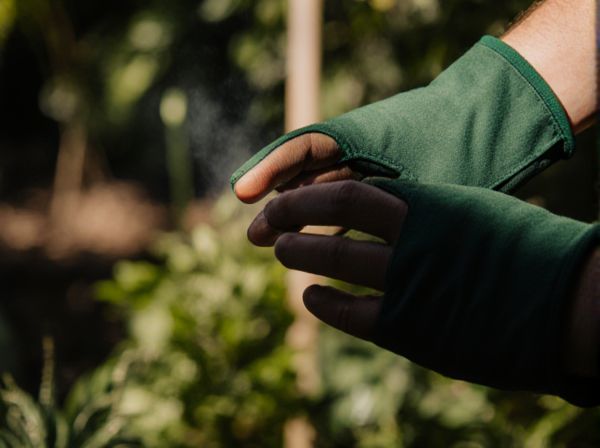
Cast Shade vs Reflected Shade Illustration
Cast shade occurs when an object blocks direct sunlight, creating a shadow on surfaces behind or beneath it, while reflected shade is produced when sunlight bounces off a surface and diffuses light into shaded areas. Cast shade provides cooler, more defined areas of shelter from heat, often used in landscaping for optimal sun protection. Reflected shade softens light and reduces glare, enhancing comfort without fully blocking sunlight.
Table of Comparison
| Aspect | Cast Shade | Reflected Shade |
|---|---|---|
| Definition | Shadow created by an object blocking direct light | Shade produced by light bouncing off surfaces |
| Source | Opaque object obstructs sunlight or artificial light | Light reflects from surfaces like walls, water, or ground |
| Intensity | Typically darker and more defined | Generally lighter and diffused |
| Color Influence | Neutral or shadow color of the blocking object | Tinted by the color of the reflecting surface |
| Usage in Design | Used to create sharp contrasts and depth | Used to soften lighting and add color nuance |
Understanding Cast Shade in the Garden
Cast shade in the garden occurs when an object, like a tree or structure, blocks direct sunlight, creating a distinct shadow area that influences plant growth and microclimate. Understanding cast shade helps gardeners strategically place shade-tolerant plants in these shadowed zones to optimize health and aesthetics. Unlike reflected shade, which is softer and diffused from surfaces like walls or water, cast shade produces sharper, cooler shaded spots vital for designing diverse garden environments.
What is Reflected Shade?
Reflected shade occurs when sunlight bounces off surfaces like walls, water, or pavement, casting indirect shadows that offer cooler, diffused light rather than complete darkness. Unlike cast shade created directly by an object blocking light, reflected shade softens the intensity of sunlight by redirecting it, reducing heat and glare in surrounding spaces. This phenomenon is essential in urban design and landscaping to maximize comfort while maintaining natural light.
Key Differences: Cast Shade vs Reflected Shade
Cast shade occurs when an object blocks direct sunlight, creating a shadowed area with reduced light intensity and cooler temperatures beneath it. Reflected shade is produced when sunlight bounces off surfaces like walls or water, indirectly illuminating areas with diffused, softer light and less temperature reduction compared to cast shade. The primary difference lies in cast shade being a direct obstruction of light, while reflected shade results from ambient light reflected onto surfaces.
How Cast Shade Impacts Plant Growth
Cast shade directly reduces the amount of sunlight reaching plants, lowering photosynthesis rates and potentially stunting growth due to insufficient light energy. This form of shade creates cooler microclimates and can alter transpiration rates, affecting water and nutrient uptake essential for plant development. Understanding cast shade's effect is crucial for optimizing garden layouts and managing crop yield in shaded environments.
Effects of Reflected Shade on Garden Plants
Reflected shade significantly influences garden plants by reducing direct sunlight intensity and moderating temperature fluctuations, which enhances moisture retention in the soil. This type of shade can promote healthier growth for shade-tolerant species by preventing leaf scorch and minimizing water stress. Plants near reflective surfaces like walls or light-colored structures benefit from diffused light, improving photosynthesis efficiency and overall vitality.
Identifying Cast Shade Areas in Your Yard
Cast shade occurs when an object such as a tree, building, or fence blocks direct sunlight, creating a shadowed area beneath or adjacent to it, which is crucial for planning garden layouts and selecting shade-tolerant plants. Reflected shade, by contrast, is sunlight redirected from surfaces like walls or pavement, typically producing less intense shade that can still influence plant growth and microclimates. Identifying cast shade areas in your yard involves observing sun patterns throughout the day, noting the movement of shadows, and mapping these zones to optimize landscaping and plant health.
Recognizing Reflected Shade Zones
Reflected shade zones occur when sunlight bounces off surfaces like walls, water, or pavement, creating cooler areas that differ from direct cast shade produced by physical objects blocking the sun. Recognizing these zones requires understanding surface reflectivity and angles of incident light, which influence the intensity and distribution of reflected shade. Identifying reflected shade is crucial for landscape design and urban planning to optimize thermal comfort and plant growth conditions.
Best Plants for Cast Shade Conditions
Cast shade occurs when an object blocks direct sunlight, creating cooler and darker environments ideal for plants like hostas, ferns, and astilbes that thrive in low light and moist soil. Reflected shade, produced by sunlight bouncing off surfaces, offers brighter indirect light suitable for plants such as hydrangeas and impatiens. For cast shade conditions, selecting shade-tolerant species with broad leaves and slower growth rates ensures healthy foliage and vibrant garden displays.
Top Plant Choices for Reflected Shade
Top plant choices for reflected shade include ferns, hostas, and astilbes, which thrive in indirect light bouncing off walls or structures. These plants adapt well to lower light levels and benefit from the warmth surfaces radiate after sun exposure. Selecting species like hellebores or purple coneflowers enhances garden aesthetics while optimizing growth under reflected shade conditions.
Designing a Garden with Both Cast and Reflected Shade
Designing a garden with both cast shade and reflected shade enhances plant diversity and microclimate control. Cast shade, created by trees or structures blocking direct sunlight, provides cooler areas ideal for shade-loving plants like ferns and hostas. Reflected shade, produced by sunlight bouncing off surfaces such as walls or water features, brightens shaded spots and supports plants requiring moderate light, optimizing spatial use and garden health.
Cast Shade vs Reflected Shade Infographic

 gardendif.com
gardendif.com